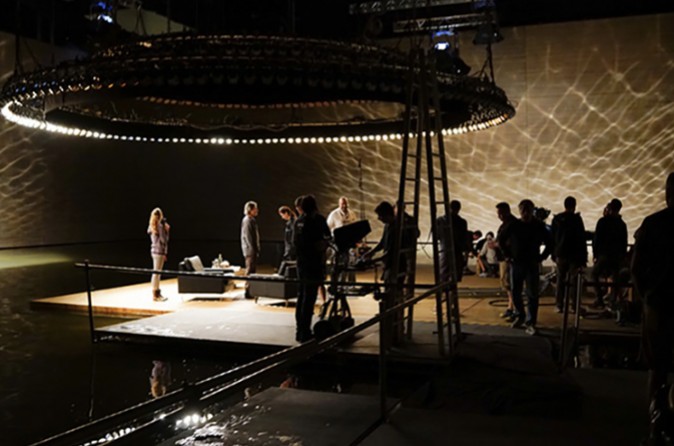
Lighting 101
By Bokeh Rentals | July 9th, 2021The modern cinematographer lives in an incredible time of technical advancement. There are so many different ways to shoot a scene, the freedom can be daunting. What camera, with which lens, will impart this specific feeling upon the viewer? What quality of light will support the idea I’m trying to communicate in this moment? The questions are endless, and the answers are constantly becoming more varied, with new equipment and technology arriving on a daily basis allowing for greater creativity, expression, and efficiency. When asking some of the preliminary questions in pre-production, it’s easy to get lost in a maze of options and combinations of options.
I have heard DPs with storied careers say no matter how much I learn, I’m just getting started. For people early in their careers, hearing that can be intimidating. It can also be exciting. There is so much to learn in the technical and artistic craft of cinematography, and it is continuously evolving. If anything, the one limitation we face is near-unlimited options, which can be the enemy of creativity.
With this lighting series, I am going to try to provide a guide to the labyrinth of lighting equipment and their uses. Narrowing down lighting units to specific choices for different applications. This is research I’m doing for myself, and I hope it will be useful to both beginners and seasoned cinematographers. After covering the basic types of lighting, I will start focusing on techniques and scene breakdowns later on. The next few blogs will cover the four types of light that dominate the industry: tungsten, LED, HMI, and fluorescent.
One of the most important choices a DP has to make when planning a production is what lighting to use. Arguably, this is as important if not more fundamental to cinematography than camera and lens choice. In many ways, it’s not about what camera you shoot with, rather how you use it and what takes place in front of the camera in the scene. Having technical and artistic understanding of lighting will have a much greater impact on the overall quality of a film than upgrading to the most expensive camera and glass the budget will allow for.
Learning types of light, what different lights achieve, and lighting technique is essential to cinematography. This lighting series will begin with summaries of different types of light, their strengths, pros and cons. Beginning with two of the most common types of light, tungsten and LED.
TUNGSTEN
The tungsten light is a staple of the film industry, and has been for more than 90 years. The light is a simple combination of parts: an incandescent lamp and a reflector, and in the case of fresnel fixtures, a fresnel lens.
“Incandescent” means emitting light as a result of being heated. Developed throughout the 19th century and commercialized by Thomas Edison, the incandescent bulb produces light by sending an electric current through a tungsten wire (filament) and heating it to the point it glows. The light quality is heavily weighted in the red part of the visible spectrum with a balance of around 3200K color temperature. The color output response of heated tungsten is very even and continuous, which has led many cinematographers to prefer tungsten light over other sources. It is the purest form of artificial light and makes skin tones look beautiful.
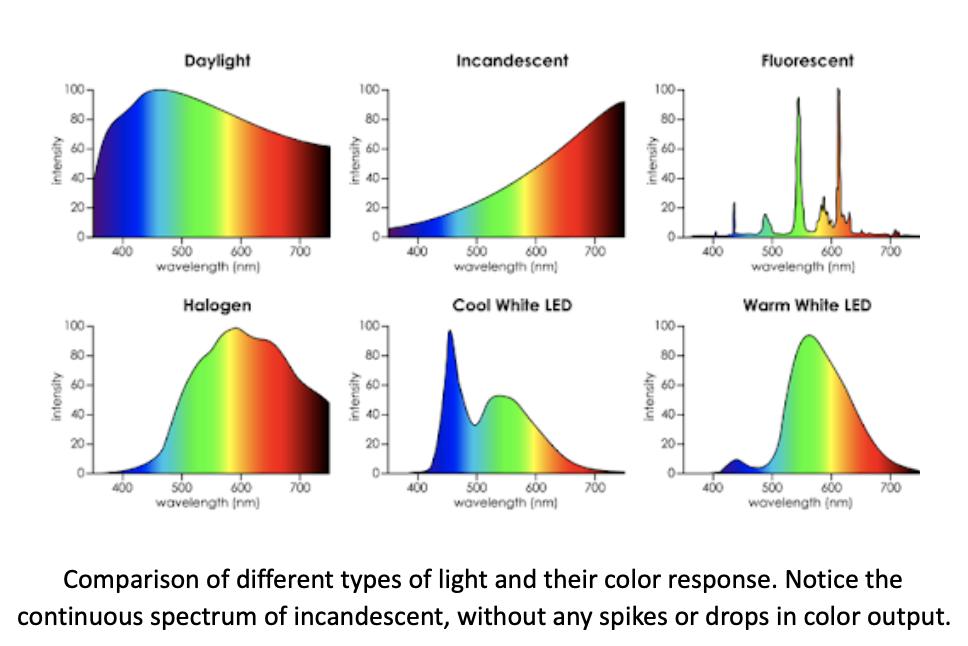
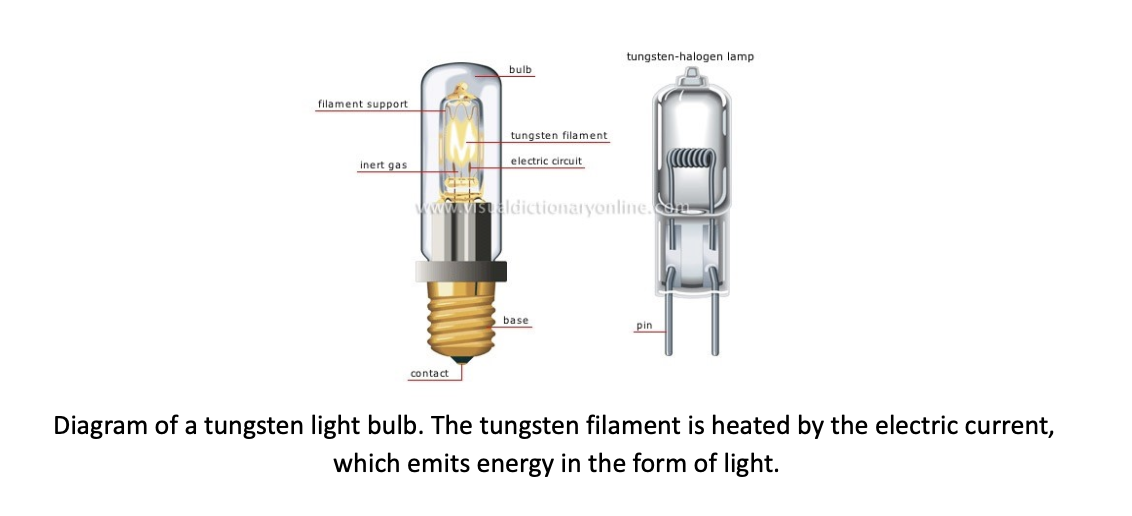
Mole-Richardson is the world-renowned leader in tungsten lamps. They make lights ranging from the 150W tungsten “inkie” to the 20,000W solarspot for a variety of situations. View their catalogue on their website. These lights are focusable, from “spot” to “flood” settings allowing for control of the beam.
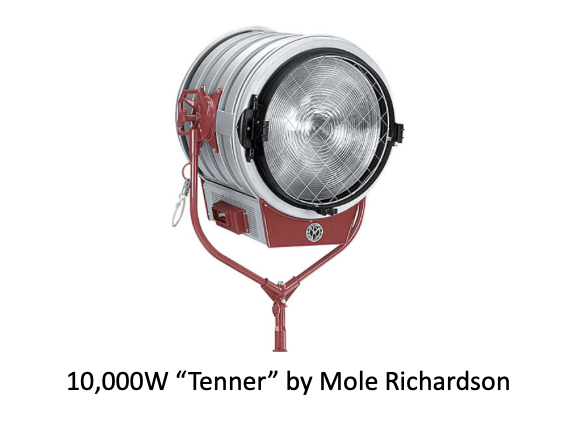
Pros:
- Beautiful, continuous color spectrum, great skin tones
- Easily dimmable, flicker-free
- Huge range of fixtures that work perfectly together
- Controllable from spot to flood settings
- Affordable
Cons:
- Energy requirements - not much bang for your buck in terms of input and output
- Gets very hot, require gloves at all times
- 3200K color temperature, loses 1-2 stops of light to gel color to daylight balance
- Delicate and heavy
- Can’t be battery powered
- Cumbersome in comparison to LED, fluorescent
Tungsten lights have a wide range of uses, especially in controlled studio settings. Their greatest limitation is their power requirements in relation to their output, where 90% of the energy input is lost to heat. Especially on indie productions, tungsten lights are difficult because anything above a 2,000W light cannot be plugged into house power. By far the best thing about tungsten is the beautiful light that can’t be beaten by anything except daylight.
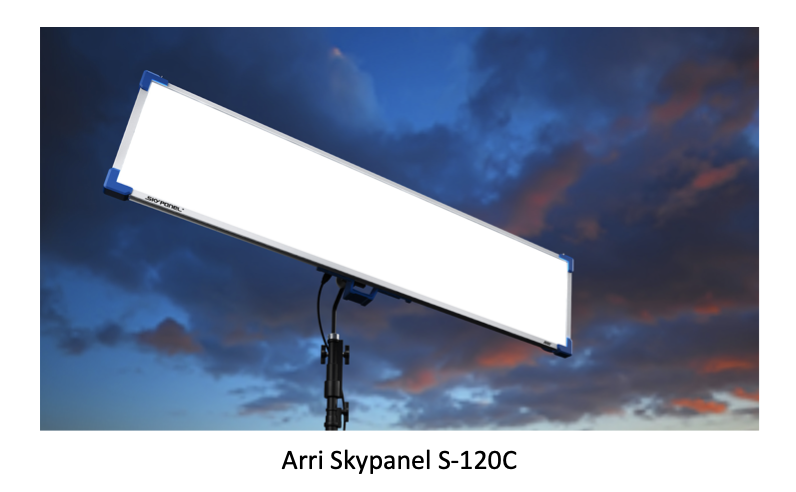
LED stands for light emitting diode. LEDs work through electroluminescence, which is the process of a material emitting light in response to the passage of an electric current. The diode is a semiconductor consisting of an electrically positive and negative side (“semiconductor die” in the diagram below). When a current flows through the diode, electrons on the negative side recombine with “holes” (atoms missing electrons) on the positive side in the p-n junction. When this recombination occurs, the electrons drop an energy level and in the process and release energy. The LED is composed of specific substances which allow this energy to be output in the form of light, and the specific amount of energy released dictates the light’s wavelength.
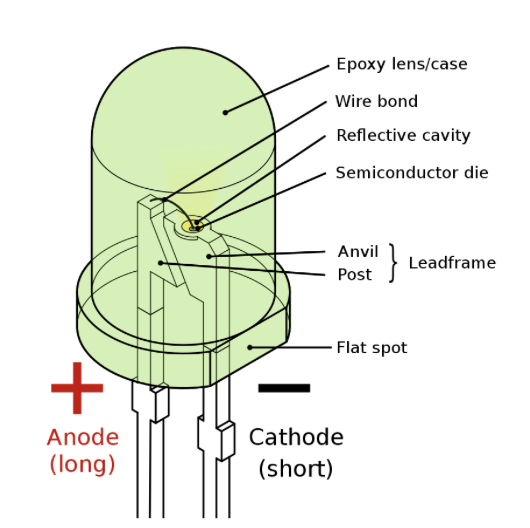
A single LED is very small, about half the size of a pencil eraser. A LED fixture has hundreds to thousands of LED units. Usually, LEDs are arranged in a panel structure, such as the Arri Skypanel shown above. This creates a naturally soft light that is very pleasant.
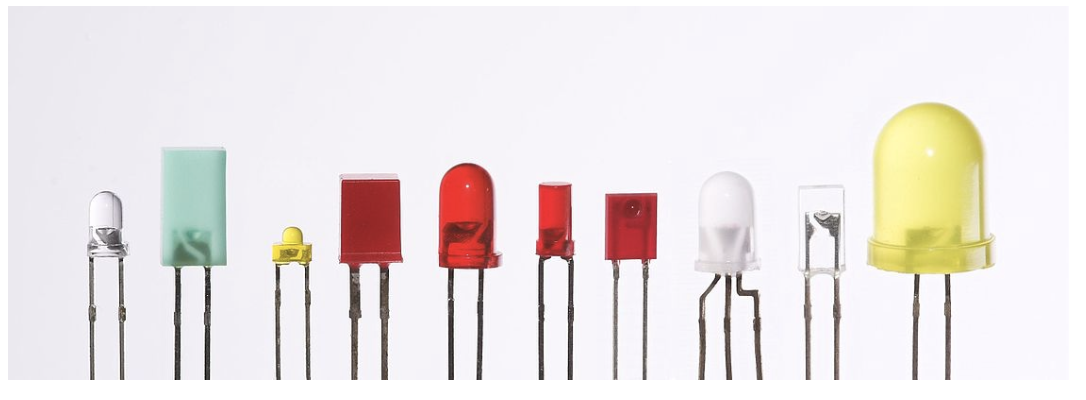
Most LED fixtures can change color temperature between 3200K and 5600K and some are RGB, which is extremely useful to have on set. In RGB LEDs, three LED emitters producing red, green and blue light are combined within one case and can produce a huge range of color.
LEDs come in a variety of shapes and sizes. They are very versatile lights. The most common type of LED is the panel arrangement, but LEDs can also be used in a fresnel light fixture to form a directional light that can be treated as a traditional lamp.
LEDs are extremely efficient - a 1600W LED puts out the same amount of light as a 10,000W tungsten (!!!). Unfortunately, they are also very expensive in comparison, especially for the highest quality units.
PROS:
- Does not use much energy, small LED units can run off battery power for hours
- Does not get hot, can be easily handled without need for gloves
- Easily dimmable
- RGB LEDs have a huge range of colors, most can change white color temp
- Robust, not near as delicate as a tungsten lamp or HMI
- Versatile, ease of use, great for run-and-gun and fast setup time
CONS:
- Color spectrum can lean towards green in cheaper units
- Light tends to look more “artificial” than traditional tungsten units, but this is getting much better with advances in color rendition
- Mixing LEDs from different companies can cause noticeable color issues
- Expensive!

